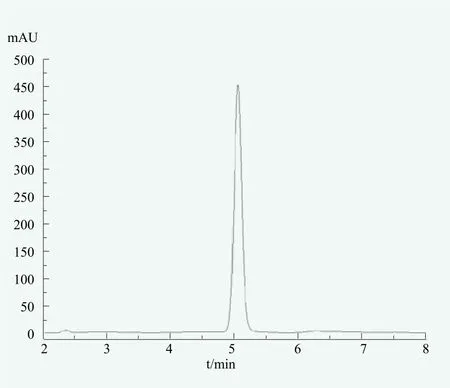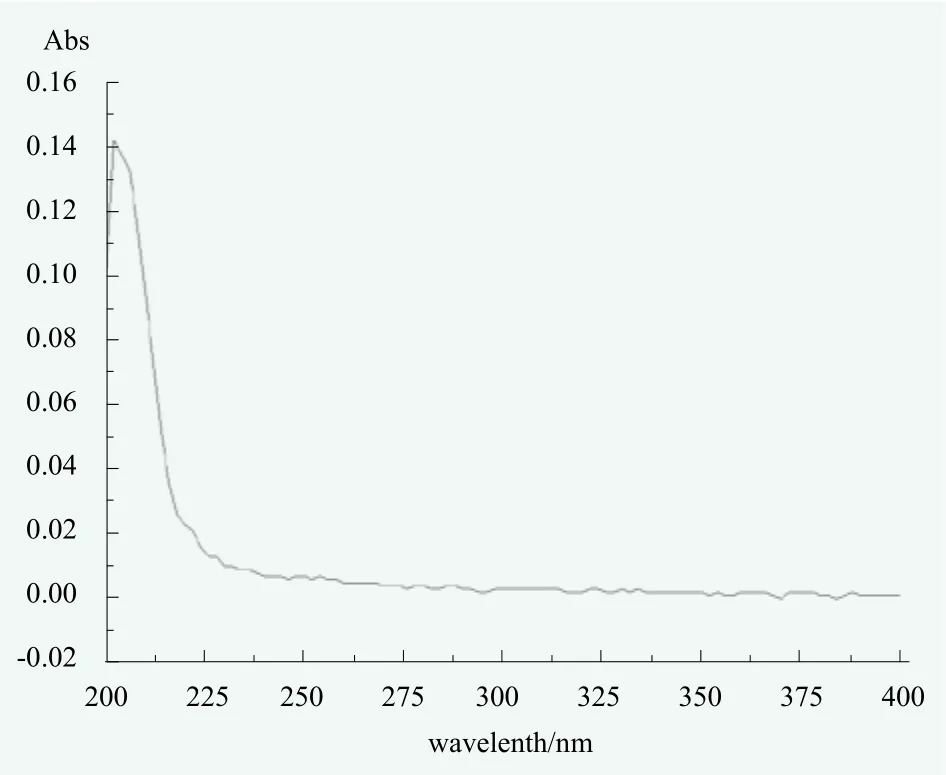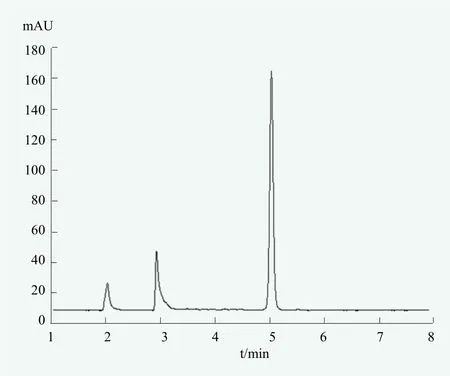Determination of Bemegride and its Salts in Cosmetics by HPLC and Their Verification by HPLC-MS/MS
Guo Xiangyu, Meng Xianshuang, Bai Hua, Ma Qiang
Chinese Academy of Inspection and Quarantine, China
Lv Yueguang
School of Chemistry and Chemical Engineering, University of Chinese Academy of Sciences, China
Chen Meng
Beijing University of Chinese Medicine, China
Wang Chun
College of Resources and Environmental Sciences, Nanjing Agricultural University, China
Abstract A high-performance liquid chromatography (HPLC) method has been developed for the determination of bemegride and its salts in cosmetics. A high-performance liquid chromatography-tandem mass spectrometry(HPLC-MS/MS) method was used for the verification of the analytical results. Cosmetic samples were ultrasonically extracted with methanol, centrifuged and filtered by microporous membrane filter prior to instrumental analysis. The chromatographic separation of the analytes was performed using a Symmetry C18 (4.6 mm × 250 mm, 5 μm) column. The quantitation was carried out by external standard method. The experimental results indicated that the limit of quantitation (LOQ) for bemegride and its salts was 0.5 mg/kg. The mean recoveries at three spiked levels ranged from 85.1% to 107.4% with the relative standard deviations (RSDs)between 3.7% and 9.3%. The suspected positive samples were subjected to further verification by HPLC-MS/MS. The method is accurate, rapid, sensitive and can be used for the inspection of cosmetics.
Key Words cosmetics; bemegride; high-performance liquid chromatography; high-performance liquid chromatographytandem mass spectrometry.
In recent years, with the acceleration of life rhythm and the increase of social pressure, people's sleep quality has generally declined,[1]which leads to people's low spirits in daily life and work. As a result, cosmetics with cleansing and refreshing functions are getting more and more attention.3-Ethyl-3-methylglutarimide (CAS 64-65-3), also known as bemegride, can directly exhilarate the respiratory center and vascular movement center as a central stimulant. They have the effects of enhancing respiratory and excitatory,[2]and have been extensively studied and applied in medicine.[3-5]However, bemegride and its salts have chronic toxicity, which can cause emotional upset, mental confusion, auditory and visual hallucinations and other symptoms. If added to cosmetics, they can cause potential harm to human health. Hence, it is clearly stated in Safety and Technical Standards for Cosmetics (2015 edition) that bemegride and its salts should not be added to cosmetics.[6]
At present, the detection methods for the prohibited ingredients in cosmetics mainly include highperformance liquid chromatography (HPLC),[7-9]high-performance liquid chromatography-mass spectrometry (HPLC-MS),[10-13]gas chromatography (GC),[14-15]gas chromatography-mass spectrometry (GC-MS),[16-17]supercritical fluid chromatography (SFC),[18]and some new rapid detection methods, such as ion mobility spectrometry(IMS),[19-20]ambient ionization mass spectrometry(AIMS),[21]etc. The above-mentioned cosmetic testing methods involve the determination of the banned preservatives, plasticizers, sunscreens, fragrances,and glucocorticoids specified in the Safety and Technical Standards for Cosmetics (2015 edition).However, there are no reports on the determination of bemegride and its salts in cosmetics. This research has developed and established a method for the determination of bemegride and its salts in cosmetics,which is of significance for ensuring the quality and safety of cosmetics and the health and safety of consumers.
Experimental
instruments and reagents
Agilent 1200 high-performance liquid chromatograph (Agilent, USA); ACQUITY ultra-performance liquid chromatograph, Xevo TQ MS triple quadrupole mass spectrometer, and MassLynx data processing software (Waters, USA); Milli-Q ultrapure water purification system (Millipore, USA); KQ-600B ultrasonic cleaner (Kunshan Ultrasonic Instrument Co., Ltd., China); CR 21G high speed refrigerated centrifuge (Hitachi, Japan).
Bemegride (CAS 64-65-3, purity≥98%) was purchased from Dr. Ehrenstorfer. Methanol and acetonitrile were of HPLC grade (Fisher, USA).Other reagents were of analytical grade.
Preparation of standard solutions
One hundred mg of the bemegride standard was exactly weighed and placed into a 100-mL volumetric flask, and then dissolved with methanol and diluted to the mark line to prepare a stock standard solution at a concentration of 1000 mg/L. A serires of working standard solutions at appropriate concentrations were diluted with methanol according to the experimental requirements.
Sample pretreatment
One g of cosmetics sample (2 g of NaCl should be added into lotion and cream samples) was exactly weighed and dissolved with methanol to the mark line in a 10 mL centrifuge tube, and then ultrasonically extracted for 20 min, centrifuged at 8000 r/min for 15 min, and finally filtered through a 0.45-μm microporous membrane for HPLC analysis.
HPLC conditions
HPLC separation was performed on a Symmetry C18(4.6 mm × 250 mm, 5 μm) analytical column at 30℃ The mobile phase consisted of methanol and water (50:50, V/V) at a flow rate of 1.0 mL/min.The injection volume was 10 μL. The detection wavelength was set at 210 nm. The HPLC chromatogram of bemegride and its salts is shown in Figure 1.

Figure 1. HPLC chromatogram of bemegride and its salts
Verification conditions for HPLC-MS/MS
A XBridge C18(2.1 mm × 150 mm, 3.5 μm)column was employed for verification experment.Acetonitrile and 0.3% aqueous ammonia solution(20:80, v/v) were used as mobile phase at a flow rate of 0.3 mL/min. The injection volume was 5 μL and column temperature was maintained at 30 ℃.
An electrospray ionization source (ESI) operating in negative mode was used. The capillary voltage was set at 2.5 kV and extraction cone voltage was 3.0 V. The ion source temperature and desolvation gas temperature were set at 150 ℃ and 500 ℃,respectively. The desolvation gas flow and cone gas flow were set at 1000 L/h and 50 L/h, respectively.Data acquisition was conducted under the multiple reaction monitoring (MRM) mode. The mass spectrometric parameters are shown in Table 1.

Table 1. Optimized mass spectrometric parameters for the analysis of bemegride and its salts
Results and discussion
Selection of detection wavelength
To determine the maximum ultraviolet absorption wavelength of bemegride, the scanning range was set from 200 to 400 nm. It was found that bemegride exhibited maximum absorption at 210 nm (Figure 2).Therefore, the detection wavelength was set at 210 nm.

Figure 2. Ultraviolet absorption spectra of bemegride and its salts
Selection of chromatographic column
The chromatographic behavior of bemegride on different columns were investigated, including Eclipse XDB C18(4.6 mm × 250 mm, 5 μm), XTerra MS C18(4.6 mm × 250 mm, 5 μm), Promosil C18(4.6 mm ×250 mm, 5 μm), Symmetry C18(4.6 mm × 250 mm, 5 μm),and Kromasil C18(4.6 mm × 250 mm, 5 μm). The results showed that there was no significant difference in the chromatographic behavior for bemegride when different columns were used. The Symmetry C18(4.6 mm × 250 mm, 5 μm) column was finally selected in this study.
Optimization of mobile phase
To optimize the mobile phase, methanol-water and acetonitrile-water were tested. The results showed that better peak shape was obtained for bemegride using methanol-water as the moblie phase.Afterwards, different proportions of methanol:water compositions (40∶60,45∶55, 50∶50, 55∶45, and 60:40) were further optimized. The experimental results exhibited that when the ratio of methanol in mobile phase was more than 50%, the retention time of bemegride was weak and led to serious matrix interference. Therefore, the final optimized composition for the mobile phase was methanol:water = 50∶50.
Optimization of column temperature
The column temperature was set at 25℃, 30 ℃, and 35 ℃ to investigate the effects of column temperature on bemegride. The results showed that there was no significant difference in the chromatographic behavior of bemegride at different temperature. The column temperature was chosen at 30 ℃ .
Selection of extraction solvent
The effects of methanol and acetonitrile as extraction solvent for bemegride have been compared. The samples of lotion, facial cleanser and cream which had been determined to be free of bemegride were used as blank samples. A certain amount of bemegride standard solution was spiked into blank samples and extracted in six replicates. The results showed that by using either methanol or acetonitrile, the extraction efficiency could be up to 95%. Considering that acetonitrile is of higher price, we selected methanol as the extraction solvent.
Verification by HPLC-MS/MS
Cosmetic samples are normally complex matrices.In view of the fact that HPLC-MS/MS has good specificity and high sensitivity. A verification method using HPLC-MS/MS was further developed for the suspected positive samples samples. Two pairs of ion transitions of 154.2 > 112.1 and 154.2 > 138.1 were selected. If the relative abundance ratio was within the acceptable tolerance of 20%, it could be confirmed that the sample contained bemegride. The MRM chromatogram of bemegride is shown in Figure 3.

Figure 3. MRM chromatogram of bemegride and its salts
Linear range, limit of detection and limit of quantitation
Under the optimized experimental conditions,the analytical results of bemegride and its salts were calculated based on the measured values of bemegride. A 1,000 mg/L standard solution of bemegride was prepared as the stock standard solution, and a series of working standard solutions(0.2, 0.5, 1, 2, 5, 10, 20, 50 mg/L) were diluted with methanol. Taking the peak area as the ordinate and the corresponding concentration of bemegride as the abscissa, the calibration curve was constructed. In the linear range, the linear equation of bemegride was y=41.52x + 2.387 with the correlation coefficient of 0.999. It appeared to be a good linear relationship.The limit of detection (LOD) and the limit of quantitation(LOQ) of the method were 0.2 mg/kg and 0.5 mg/kg,respectively.
Recovery and precision
The cosmetic samples which have been determined to be free of bemegride and its salts were taken as blank samples and spiked at three concentrations of 0.5, 5 and 50 mg/kg to study the recovery and precision. The content of bemegride and its salts in the sample should be within the standard calibration curve. If the content of sample exceeded the linear range, the sample should be diluted before analysis. According to the experimental conditions,emulsion, cream and lotion samples were tested in six replicates at different spiked concentrations. The mean recoveries at the three spiked levels ranged from 85.1% to 107.4% with the relative standard deviations (RSDs) between 3.7% and 9.3%. The HPLC chromatogram of a spiked sample is shown in Figure 4.

Figure 4. HPLC chromatogram of a spiked sample

Table 2. Results of recovery and precisio (n=6)
Analysis of real samples
Twenty-six cosmetic samples purchased from local market or online were analyzed using the developed method, including 8 lotions, 10 facial cleansers and 8 creams. The results showed that bemegride and its salts were detected in the cosmetic samples tested.
Conclusion
A method for the determination of bemegride and its salts in cosmetics by HPLC and their verification by HPLC-MS/MS has been established in this study.This method is accurate, rapid, sensitive and suitable for the determination of bemegride and its salts in cosmetics.
 China Detergent & Cosmetics2019年1期
China Detergent & Cosmetics2019年1期
- China Detergent & Cosmetics的其它文章
- The Methodology of Cosmetics Efficacy Evaluation to Provide Scientific Support for Soothing Skin Efficacy Claims
- Research on the Preparation of an Anti-Acne Cream and its Thermal Stability
- Fluorinated Surfactants and Fluorinated Polymer Materials (i):General Review
- Research Progress on the Relationship between Skin Microbial Flora and Skin Health
- Determination of 24 Allergens in Perfume with High Performance Liquid Chromatography Tandem Mass Spectrometry
- Comparison of HPLC-DAD and GC-FiD Methods for Determination of 6-Methyl Coumarin in Cosmetics
